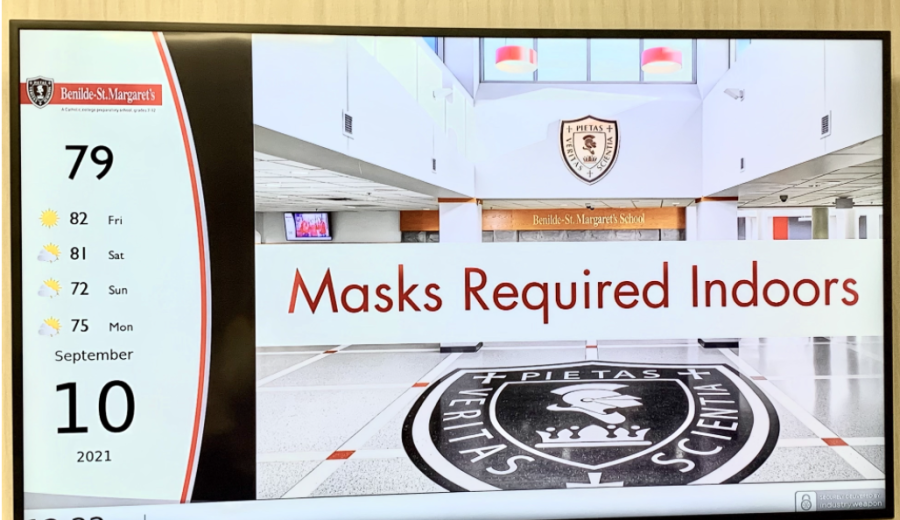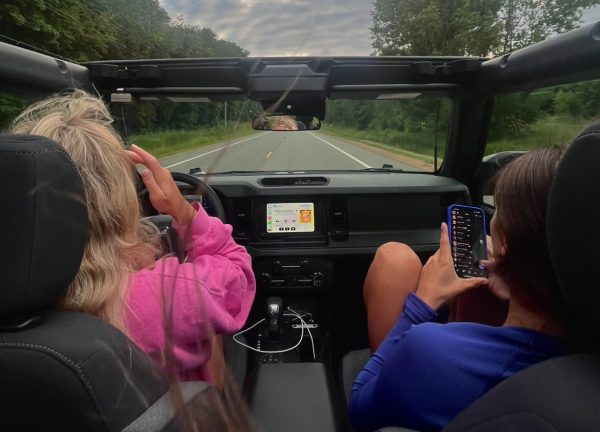New Mask Optional Policy Creates Social Pressure
“Masks Required Indoors” used to read across the tv’s throughout BSM.
Each morning, BSM students face a new decision: to mask or not to mask?
Effective September 20, masks are “recommended but not required” indoors at BSM. While some students have welcomed this new policy, it has created stress for many others.
The policy is framed as a personal choice, but really it’s a social one. Students are unlikely to base their decisions about masking on vaccination status, case counts, or even parental advice. Instead, they worry about what social signals their decision will send. If they wear a mask, will their peers think they are uptight? If they don’t, will they look insensitive toward teachers and students with vulnerable family members? Will people make assumptions about their vaccination status? Their politics? Will teachers hold their decision against them?
Social decisions are stressful at any age, but particularly during high school when social anxiety is at its peak. A school is not like the grocery store, where masked and unmasked strangers mix for brief periods and then move on. In a closed community like BSM, masking decisions make lasting impressions. Whatever they choose, students must broadcast their decisions prominently on their faces each day.
A masking rule based on an outside metric, rather than personal choice, would alleviate much of the stress on students. For example, the policy could be explicitly tied to case counts at BSM each week. (The shift from a mandatory to an optional mask policy was based partly on encouraging transmission data, but it was unclear whether the policy would be explicitly linked to that metric going forward.)
Alternatively, each classroom could make a uniform decision about masking based on those at risk in the class. A class with high vaccination rates and low risk factors might decide to shed their masks, whereas a class with a high risk student or family member might decide to keep them on. Open conversations about masks would allow students to better understand their classmate’s situations. Classes could be designated as “mask or no-mask” zones similar to peanut free-zones in elementary schools.
This solution is not perfect. Student’s may feel uncomfortable or exposed if they are required to notify a teacher about a high-risk situation. Adding some anonymity could alleviate these concerns. Students could submit google forms anonymously, and they would not need to elaborate on their risk factors.
Most importantly, students would feel less self-conscious about a masking choice outside their control. They could instead get back to worrying about other wardrobe dilemmas, like what shirt and shoes to wear with a new pair of jeans.


















































Cameron Dolan • Jan 3, 2022 at 9:33 am
I really enjoyed this article!! I think you are absolutely right and am happy to see someone had the courage to address what teenagers face amidst this pandemic.